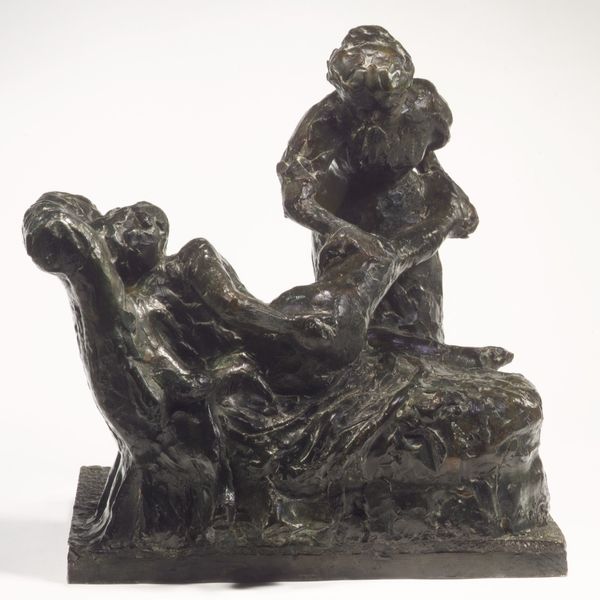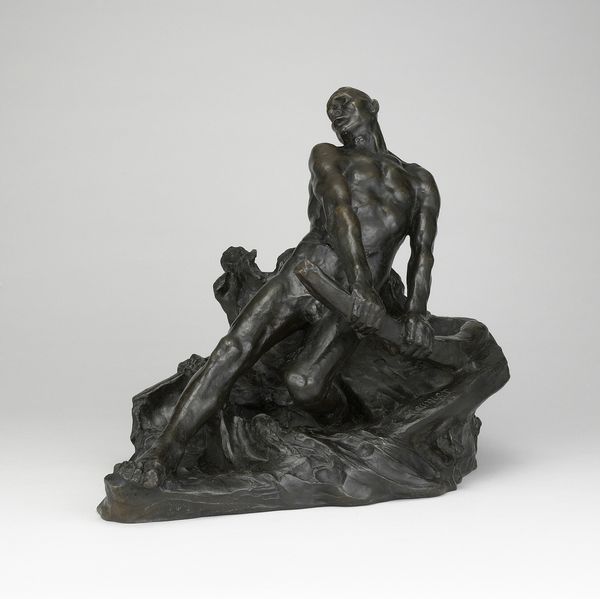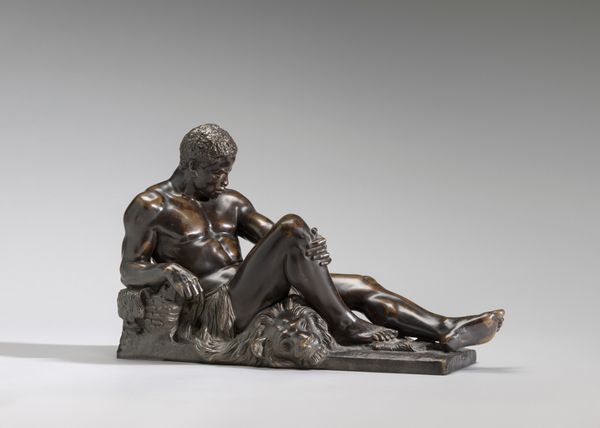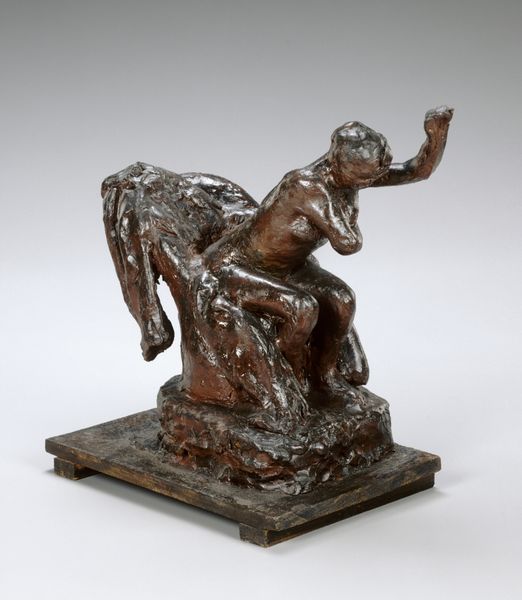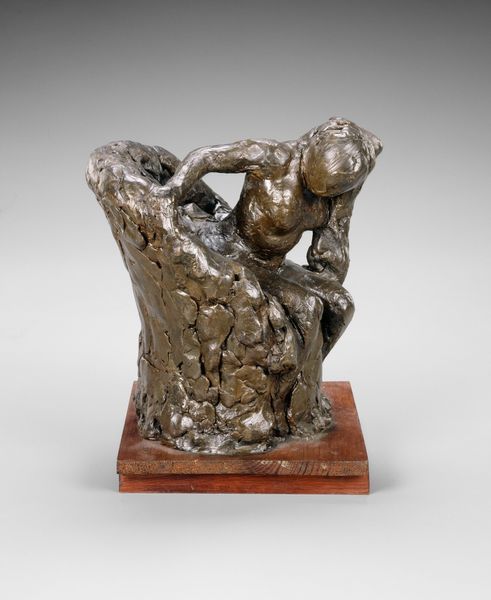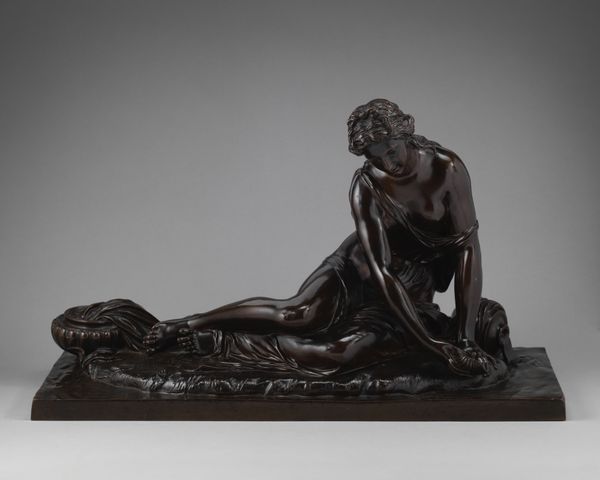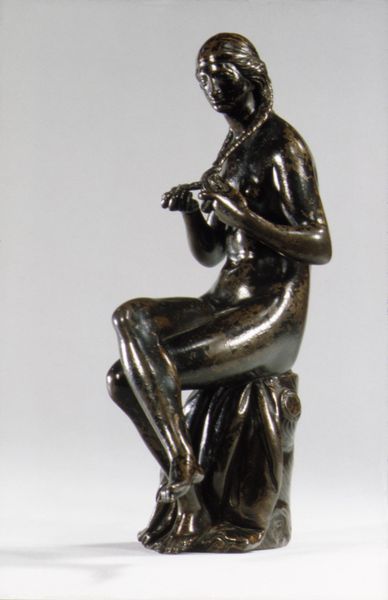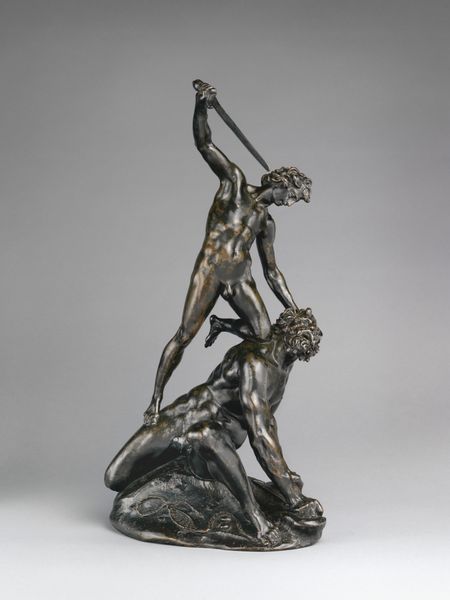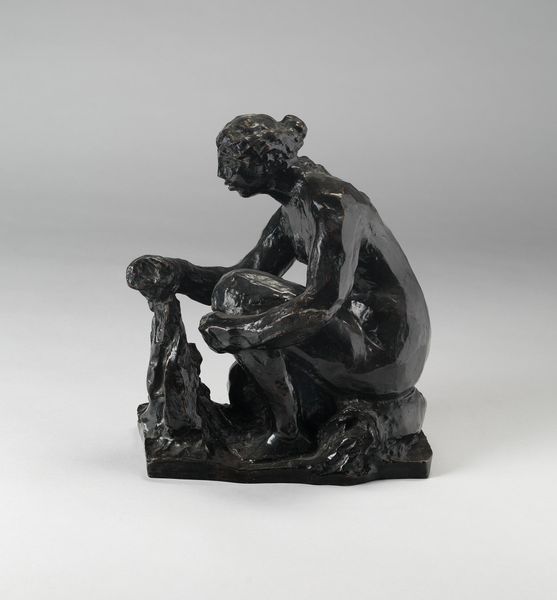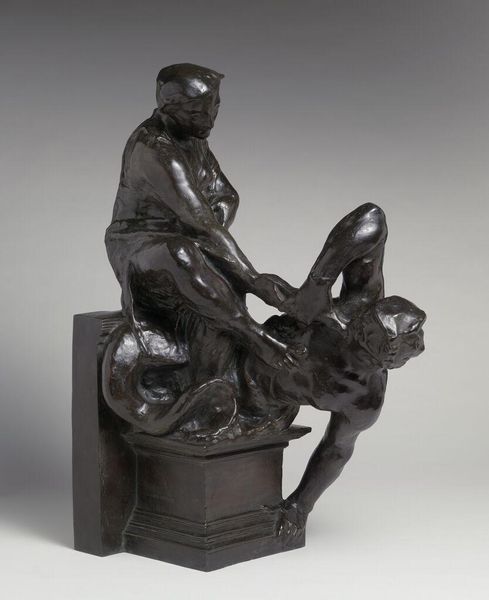
Dimensions: 47 cm (18 1/2 in.); base: 41.3 × 42.6 cm (16 1/4 × 16 3/4 in.)
Copyright: Public Domain
Editor: Here we have Degas' "The Tub," a bronze sculpture created sometime between 1889 and 1921. The figure is so contorted, it almost looks like she’s hiding, not just bathing. What's your interpretation of this very intimate moment cast in bronze? Curator: Well, it’s less about intimacy as we understand it, and more about the institutional gaze of the late 19th century. Consider the climate in which Degas was working. Realism was on the rise, focusing on depicting everyday life, often of the working class. How does turning a private moment, a woman's toilette, into a public sculpture shift the power dynamic? Editor: That's interesting, I hadn't thought of it that way. So, the act of exhibiting this piece is almost more telling than the piece itself? Curator: Precisely. The piece itself participates in the commodification and display of the female form, reflecting anxieties around class and the perceived accessibility of women's bodies in a rapidly changing society. Degas was part of a larger trend—Courbet and Manet similarly engaged with the nude in modern life. Do you see the ways in which the unidealized depiction contrasts with earlier, more allegorical nudes? Editor: Yes, it feels less about beauty and more about… observation? Almost scientific in a way. Curator: Exactly. It's about positioning the viewer as an observer of modern life, reflecting the social and political context in which the work was created and exhibited. Editor: So, understanding the art world at the time is essential to understand this sculpture. Thank you. It's made me think about the museum's role in all of this. Curator: My pleasure. Always consider who is given a voice, and who is being looked at.
Comments
No comments
Be the first to comment and join the conversation on the ultimate creative platform.
